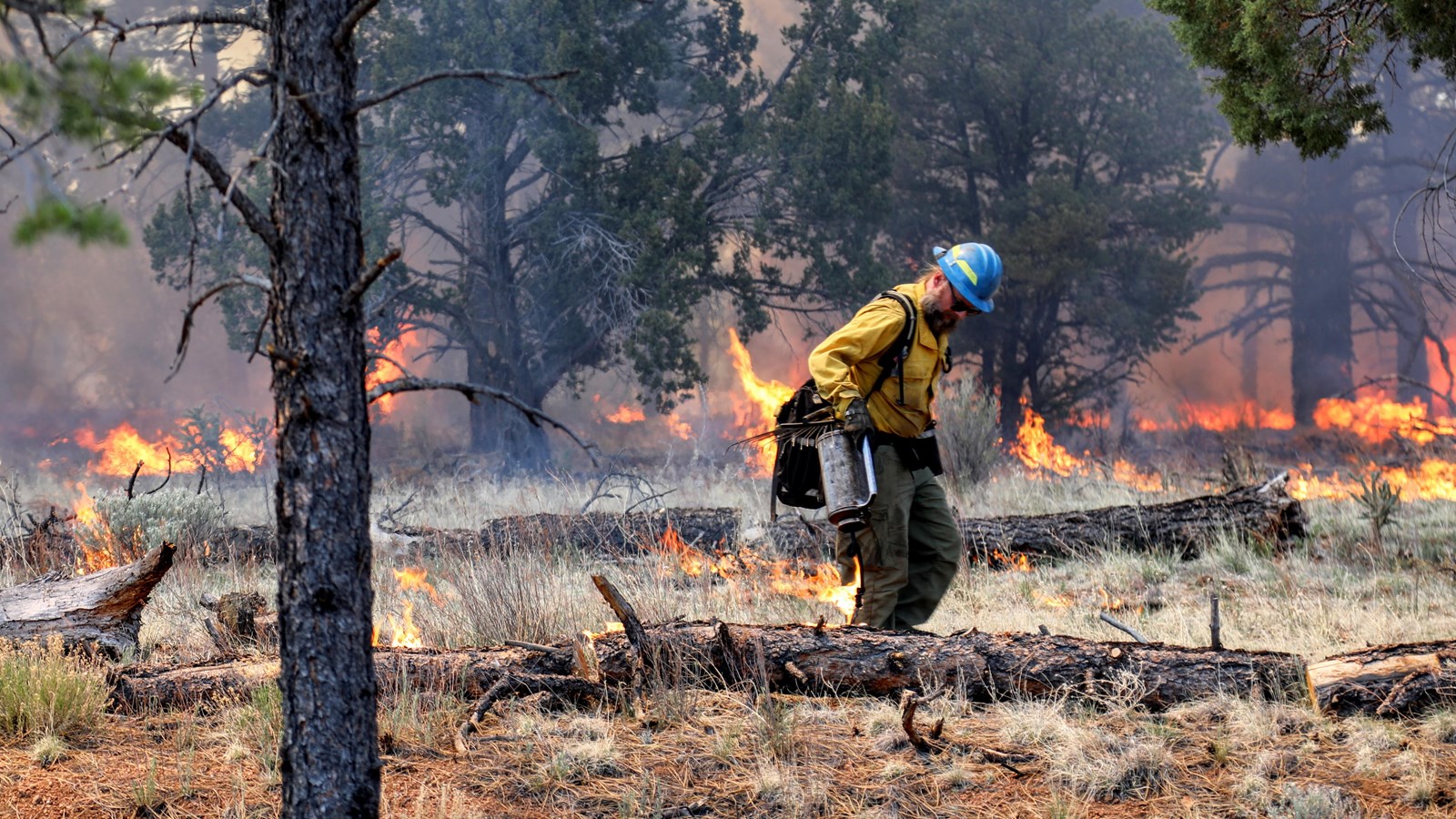Last updated: April 17, 2022
Place
Fire Ecology

NPS Emily Brent
Wildfire is a naturally occurring and necessary process. Through tree-ring research, scientists know that low intensity fires have historically occurred in this area every eight to ten years. These fires clear brush and prevent large, hot fires from burning everything.
When European settlers came to this area, they began to suppress all fires to protect grazing land and homes. Land management agencies continued this practice throughout the 20th century.
Because fires have not been allowed to burn on a natural cycle, forest lands have accumulated a high concentration of dry fuels. Fires today are generally hotter and larger, burning healthy trees that would otherwise withstand smaller fires.
Park managers are trying to restore the natural fire cycle to El Malpais National Monument. Blackened areas you may see along the trail or in other areas of the park are from prescribed fires. These fires are ignited under specific conditions to clear excess fuel and allow healthy trees to thrive.
Soon after a prescribed fire, grasses and wildflowers abound. The burned trees return nutrients to the soil and a healthy forest emerges from the ashes. One tree that thrives from the effects of fire is the quaking aspen. Known as a pioneer tree, it is the first tree to start life anew in a burned area.
